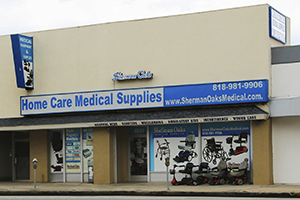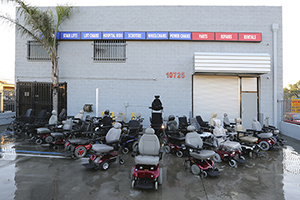Wheelchair Wheel Camber Guide

Wheel camber is applied to the rear wheels of a wheelchair. It can be described as an angling that brings the top of the wheels closer to each other. Athletes who wished to improve wheelchair-handling characteristics and stability first introduced camber into wheelchairs.
The amount of camber introduced into the wheels is measured in degrees. The higher the number the more camber or angling there is. Some wheelchairs have methods of adjusting the camber, while others do not. Camber adjustment is most often accomplished by inserting a different camber bar that alters the angle or by adjusting the axle plate for increased camber. Wheelchairs with fixed camber do not allow for altering the angle. In these cases the camber angle may be specified when the wheelchair is ordered (except in the case of low end cheeseball wheelchairs).
As camber is increased, the width of the wheelchair across the bottom increases. This adds lateral stability to the system by increasing the wheelchairs footprint. If to much camber is added there may be a problem getting through doorways. The amount of camber required for daily use is not commonly the same as that which is required for sports.
Advantages of Wheel Camber
- The wider footprint adds lateral stability to the wheelchair.
- Redirects forces to soften the ride.
- Places the push rims in a more ergonomic position for pushing. It is more natural to push down and outward.
- Protects the hands when pushing in tight areas since the bottom of the wheels will make contact first with walls and doorframes.
- Less strain on shoulders since the plane of the wheel is closer to that of the shoulder.
- Makes turning quicker.
- Gives the wheelchair a sportier look.
Disadvantages of Wheel Camber
- Wheelchair will be wider.
- May add cost to the chair.
- Excessive camber may cause the wheels to rub against the armrest side panels or against the user.
- Diminished traction and uneven tire wear on a conventional tire.
Conventional tread placement is centered on the tire. A cambered tire rides on the inside edges of the tire. Some manufacturers make tires with offset treads to compensate for cambering.
Our service area covers most of Southern California including Los Angeles and surrounding cities.
To see a full list of cities covered in our service area please click here.
- Agoura Hills
- Alhambra
- Altadena
- Arcadia
- Arleta
- Artesia
- Avalon
- Azusa
- Baldwin Park
- Bel Air
- Bell
- Bell Gardens
- Bellflower
- Beverly Hills
- Bradbury
- Brentwood
- Burbank
- Cahuenga Pass
- Calabasas
- Camarillo
- Canoga Park
- Carson
- Cerritos
- Chatsworth
- Claremont
- Commerce
- Compton
- Covina
- Cudahy
- Culver City
- Diamond Bar
- Downey
- Duarte
- Eagle Rock
- El Monte
- El Segundo
- Encino
- Gardena
- Glendale
- Glendora
- Granada Hills
- Hawaiian Gardens
- Hawthorne
- Hermosa Beach
- Hidden Hills
- Huntington Park
- Industry
- Inglewood
- Irwindale
- Kagel Canyon
- La Canada
- La Crescenta
- La Habra Heights
- La Mirada
- La Puente
- La Tuna Canyon
- La Verne
- Lake Balboa
- Lake View Terrace
- Lakewood
- Lancaster
- Lawndale
- Lomita
- Long Beach
- Los Angeles
- Lynwood
- Malibu
- Manhattan Beach
- Marina Del Rey
- Maywood
- Mission Hills
- Monrovia
- Montebello
- Monterey Park
- Montrose
- NoHo Arts District
- North Hills
- North Hollywood
- Northridge
- Norwalk
- Oak Park
- Olive View
- Oxnard
- Pacific Palisades
- Pacoima
- Palmdale
- Palos Verdes
- Panorama City
- Paramount
- Pasadena
- Pico Rivera
- Pomona
- Porter Ranch
- Redondo Beach
- Reseda
- Rolling Hills
- Rosemead
- San Dimas
- San Fernando
- San Gabriel
- San Marino
- Santa Barbara
- Santa Clarita
- Santa Fe Springs
- Santa Monica
- Sepulveda
- Shadow Hills
- Sherman Oaks
- Sierra Madre
- Signal Hill
- Simi Valley
- South El Monte
- South Gate
- South Pasadena
- Stonehurst
- Studio City
- Sun Valley
- Sunland
- Sylmar
- Tarzana
- Temple City
- Thousand Oaks
- Toluca Lake
- Toluca Woods
- Topanga
- Torrance
- Tujunga
- Valencia
- Valley Glen
- Valley Village
- Van Nuys
- Ventura
- Vernon
- Walnut
- Warner Center
- West Covina
- West Hills
- West Hollywood
- West Toluca
- Westlake Village
- Westwood
- Whittier
- Winnetka
- Woodland Hills




 Accreditation Commission for Health Care
Accreditation Commission for Health Care
 RESNA Accredited
RESNA Accredited





